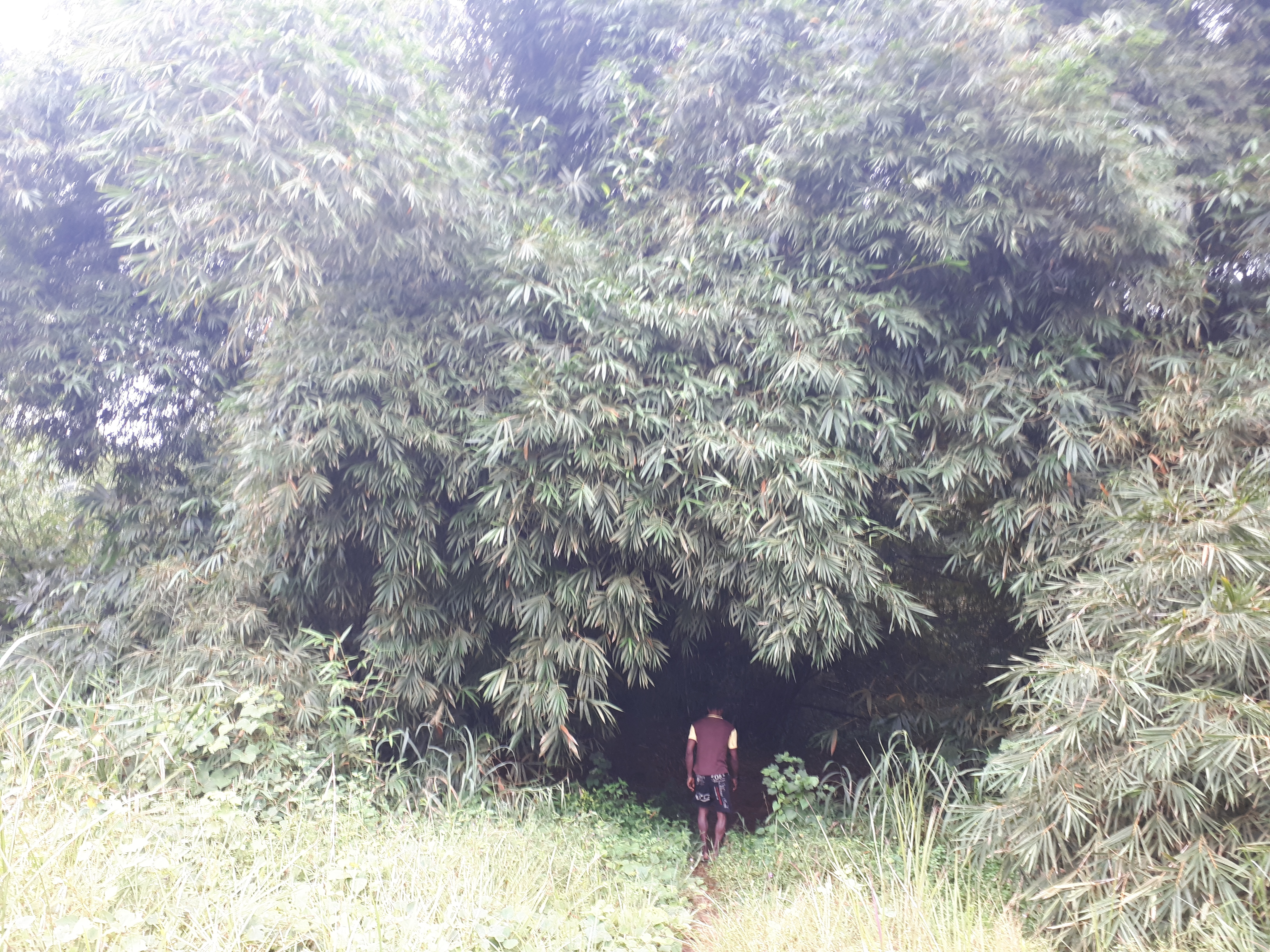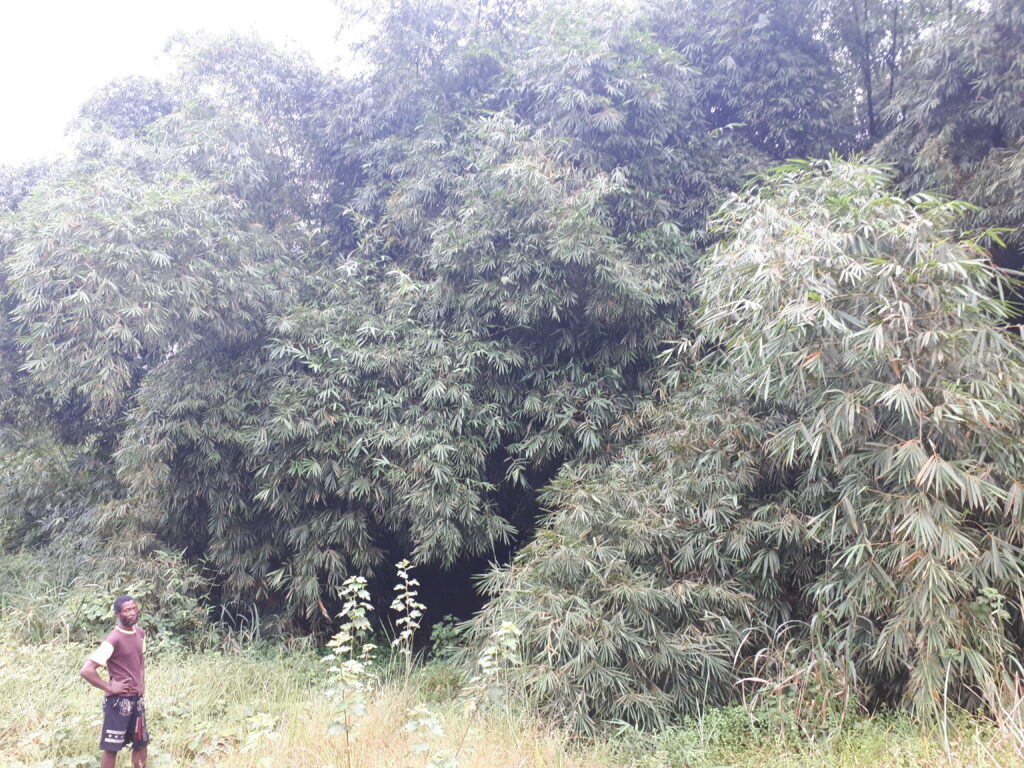This story excerpt was translated from French. To read the original story in full, visit Mediaterre. You may also view the original story on the Rainforest Journalism Fund website here. Our website is available in English, Spanish, bahasa Indonesia, French, and Portuguese.
Long considered an invasive and worthless plant in Cameroon, bamboo is increasingly used to reforest areas impacted by agriculture and illegal logging.
Since May 23, 2017, the Cameroonian NGO Forests and Rural Development (FODER), which fights against illegal deforestation and advocates for the sustainable management of forest resources, has been implementing a memorandum of understanding signed with the International Bamboo and Rattan Organization (INBAR), for the development of the resource.
According to François Médard Medjo, an independent external observer at FODER, the project consists of reforesting sites that have been negatively impacted by logging, bushfires, and mining activity or sites that are on the verge of global deforestation such as the North and Far North regions.
As part of the implementation of this MoU, FODER has already restored 15.5 hectares of land in Mbalmayo, a locality in the Centre-Cameroon region, says FODER coordinator Christophe Justin Kamga. In May 2021 alone, the organization planted more than 2,000 bamboo plants on an area of 10 hectares in the localities of Mbalmayo, Akomnyada 1 and 2, and Avebe.
The ambition of the NGO is to contribute to the restoration of 600,000 hectares of degraded land in Cameroon within five years. The initiative is also in line with "The Restoration Initiative" (TRI) project developed in partnership with Inbar, with the support of the Global Environment Facility (GEF). In order to sustain the resource, FODER has two nurseries with 30,000 seedlings, including 10,000 seedlings in Akomnyada and 20,000 seedlings on the site of the National Forestry Development Support Agency (ANAFOR) in Mbalmayo.











